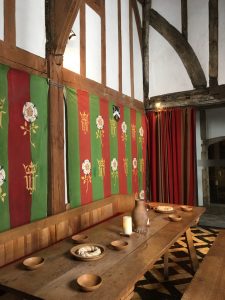Plans to meet Levi having fallen through, I found myself at loose ends in my favorite city in the UK.
I had no particular plan, so I swung by the Tourist Information Center, obtained a map of York’s independent bookstores, tracked down the delightful Little Apple Books, purchased Stardust by Neil Gaiman, and went hunting for a cafe in which to escape the intermittent flurries of snow.
I explored the city on foot and rediscovered some of my favorite things from my last visit, like York Minster. Pictures of this do not do justice to the truly colossal scale, or to the beauty of the yellowed stones in the sunlight when you stand directly under the buttresses:

Here’s York Minster as seen from part of the city wall. I’m not sure what the building in the foreground is, but it provides some nice context for the scale of York Minster (note that the building in the foreground is three stories and York Minster is at least four blocks away behind it).
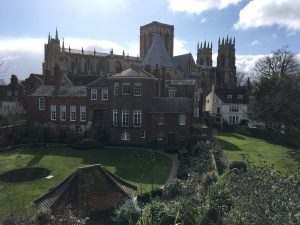
One of the incredible things about York—this is true throughout the UK, but seems especially visible here—is the layers of history all stacked on top of one another. Here’s a 13th-century watch tower, later used as a 16th-century water tower, just kind of growing out of the side of a 19th-century pub:
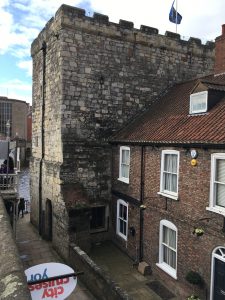
Below are the ruins of a medieval hospital (which in a medieval context was more of a halfway house for the poor than a place of healing), which just happens to be sitting in the middle of the municipal gardens. Oh, and on the other side of the gardens? The ruins of an abbey.
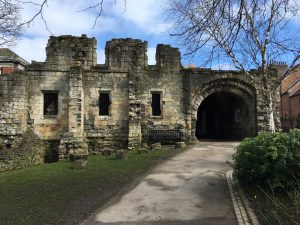
Here’s one of those medieval gates, one of the places where you can walk a fragment of the city wall. It’s built on the foundations of the old Roman gate:
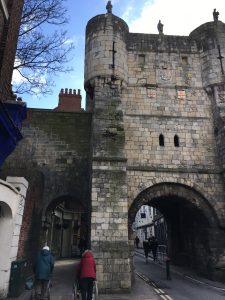
To readers whose names begin with “Mom” or “Dad” (and especially Mom, who tends, like me, to remember cities chiefly by what we ate there), this tea house around the corner from the cathedral will be familiar. It has the best high tea in the world. Sadly, I had neither the budget nor the company for high tea today:
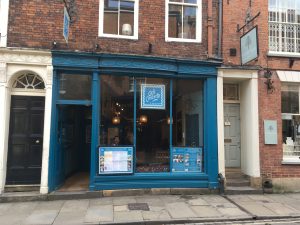
And for those readers whose names are “David,” this store was obviously designed for you:
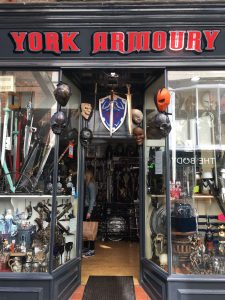
The Shambles is a magnificent neighborhood of 14th-century houses and shopfronts with overhanging upper stories and crooked walls, facing each other across a lane so narrow you could reach out and touch either wall:
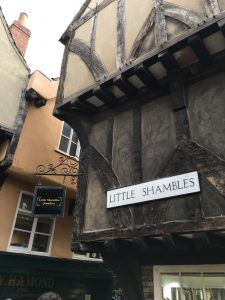
York, more than any other city I’ve been to, has houses you look at and know aren’t Victorian reconstructions. This picture doesn’t do this pub perfect justice, but you may be able to see that the overhanging bottom of the half-timbered upper story is crooked.
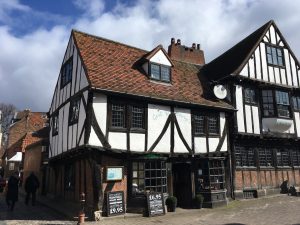
And lastly, I stumbled upon a gem that I found only by ducking into an alley to get out of one of the unexpected flurries of dry snow. This is Barley Hall, a home to the 14th-century goldsmith and city alderman William Snawsell, tucked out of sight off one of the boutique streets ten minutes’ walk from the Shambles. Although largely rebuilt (and certainly renamed, for a certain Professor Barley who influenced the project in the 1990s), it is nonetheless an interesting and bite-sized museum, even if the upper floor is essentially an incongruous and slightly Disneyfied shrine to Henry VIII and the various film adaptations of his life.
Here’s the courtyard, as seen when you emerge from the alley:
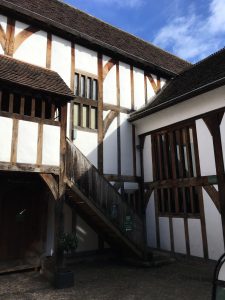
Here’s the steward’s room:
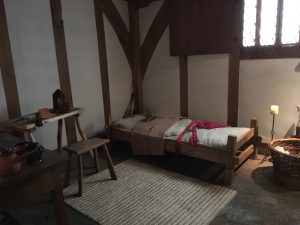
And here’s the dining hall, with all textiles hand-woven and dyed using materials available in the 15th century:
